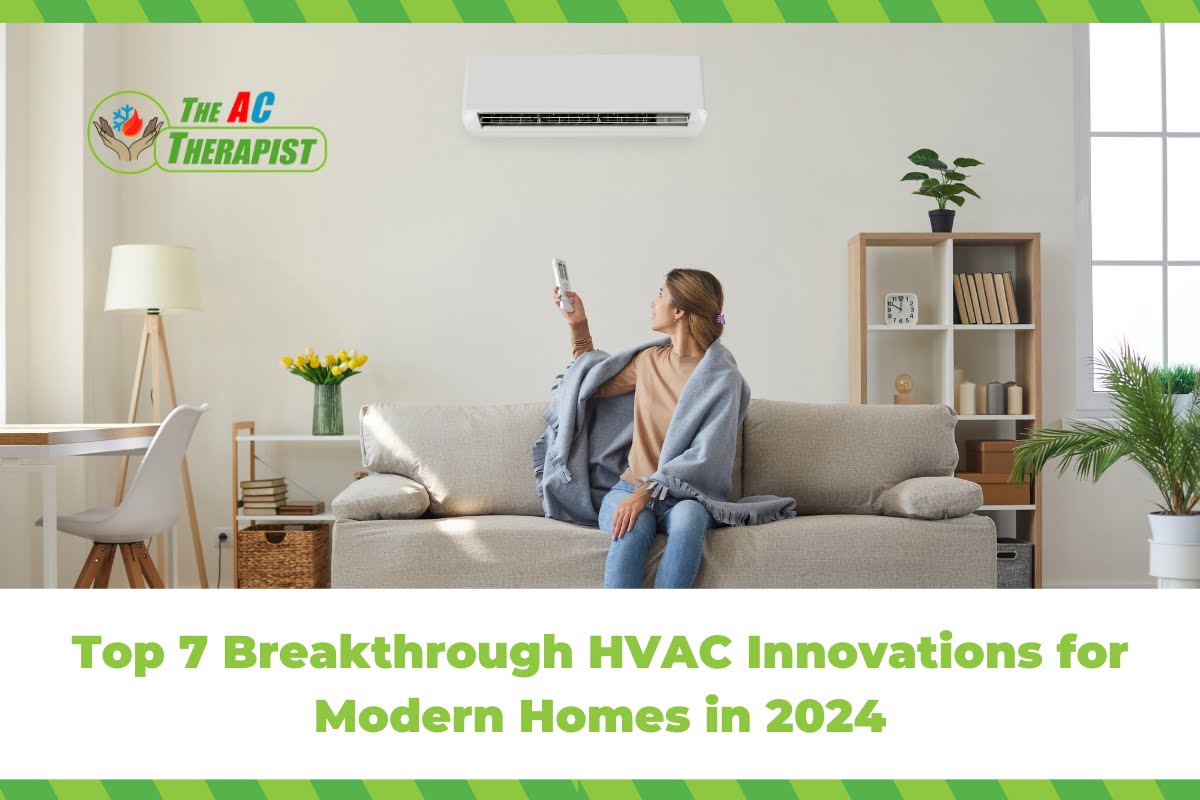Top 7 Breakthrough HVAC Innovations for Modern Homes in 2024
As we embark on the journey into 2024, the landscape of HVAC innovations is experiencing a revolution like never before. The HVAC industry is at a pivotal point, with a surge in demand for HVAC innovations that deliver not only unparalleled comfort but also meet the growing expectations for energy efficiency, environmental sustainability, and seamless integration with advanced smart home technologies.
This shift is not just a trend; it’s a movement towards a more innovative and sustainable future in home climate control. In this comprehensive blog, we will delve deeply into the top seven HVAC innovations, showcasing how each of these groundbreaking advancements is poised to redefine the standards of modern home comfort and efficiency in 2024.
From cutting-edge smart HVAC systems to eco-friendly solutions, each of these HVAC innovations represents a key piece in the puzzle of future home climate management. Join us as we explore these transformative HVAC innovations, highlighting how they are set to change the face of home heating, cooling, and air quality in the year 2024 and beyond.
1. Smart HVAC Systems
The era of smart homes is here, and HVAC systems are not left behind. In 2024, smart HVAC systems are becoming more intuitive and user-friendly. These systems can learn from your habits and adjust the temperature accordingly, ensuring optimal comfort while reducing energy consumption. Integration with home assistants like Alexa and Google Home allows homeowners to control their HVAC systems with voice commands or through a smartphone app, offering unparalleled convenience.
2. Geothermal Heat Pumps
Geothermal heat pumps, a technology that utilizes the earth’s constant underground temperature to heat and cool homes, are gaining traction. These systems are incredibly energy-efficient and environmentally friendly. In 2024, we see a significant reduction in installation costs, making this technology more accessible to a broader audience. Geothermal systems have a long lifespan and can significantly reduce utility bills, making them an excellent investment for modern homes.
Solar power continues to be a key player in HVAC innovations. In 2024, solar-powered HVAC systems are more efficient and more affordable than ever. These systems harness the power of the sun to cool and heat your home, reducing reliance on traditional energy sources and cutting down on utility costs. With advancements in solar panel technology, these systems are becoming more practical for residential use, even in areas with less consistent sunlight.
4. Indoor Air Quality (IAQ) Solutions
As health and wellness continue to be a priority for homeowners, HVAC systems that improve indoor air quality are becoming essential. In 2024, we see advanced filtration systems, UV light installation, and smart ventilation systems that not only regulate temperature but also ensure the air in your home is clean and free from pollutants. These innovations are particularly beneficial for individuals with allergies or respiratory issues.
5. HVAC Zoning Systems
Zoning systems have revolutionized how we heat and cool our homes. In 2024, these systems are more sophisticated, allowing homeowners to control the temperature in different areas or ‘zones’ of their home independently. This means you can keep the living room cool while maintaining a warmer temperature in the bedrooms, leading to enhanced comfort and energy efficiency.
6. High-Efficiency HVAC Equipment
The push for energy efficiency is driving innovations in HVAC equipment. In 2024, we see the rise of high-efficiency furnaces, air conditioners, and heat pumps that offer superior performance while consuming less energy. These systems are designed to meet or exceed the latest energy efficiency standards, helping homeowners save money and reduce their carbon footprint.
7. Integration with Home Automation Systems
Finally, the integration of HVAC systems with home automation is a significant trend in 2024. This integration allows for a seamless connection between your HVAC system and other smart home devices, creating a fully integrated and intelligent home environment. From adjusting your thermostat to scheduling maintenance, everything can be managed from a central hub or a smartphone app.
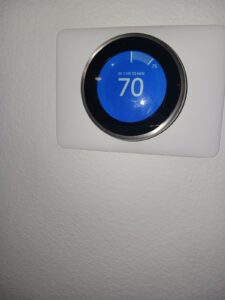
HVAC Developments in 2023: The Good and the Bad
Introduction
As we navigate through 2023, the HVAC industry continues to evolve, bringing forth new developments that are shaping the way we think about home comfort and energy efficiency. While many of these advancements offer significant benefits, some challenges and drawbacks need to be considered. In this blog, we’ll explore the good and the bad of the latest HVAC developments in 2023.
The Good
1. Advanced Smart Thermostat Technologies
One of the most positive developments in 2023 is the advancement in smart thermostat technologies. These devices are becoming more intuitive, learning from user behavior to optimize heating and cooling schedules, leading to increased comfort and energy savings. Integration with other smart home devices has also improved, offering a more seamless and connected home experience.
2. Eco-Friendly Refrigerants
The shift towards eco-friendly refrigerants is a significant step forward for the HVAC industry. With a lower Global Warming Potential (GWP), these new refrigerants are less harmful to the environment while maintaining or improving the efficiency of HVAC systems. This change is crucial in the fight against climate change and is a positive move for both the industry and the planet.
3. Enhanced Indoor Air Quality Systems
The focus on indoor air quality has never been higher, and 2023 sees the introduction of more advanced air purification and filtration systems. These systems are designed to remove pollutants, allergens, and pathogens, providing a healthier living environment. This is particularly beneficial in light of global health concerns and increasing awareness of the importance of clean indoor air.
The Bad
1. Rising Costs of High-Tech HVAC Systems
While technological advancements bring numerous benefits, they also come with higher costs. The latest HVAC systems, equipped with cutting-edge features, can be significantly more expensive than traditional models. This makes them less accessible to a portion of the market, potentially widening the gap between those who can and cannot afford the latest in HVAC technology.
2. Complexity and Maintenance Challenges
With the introduction of more complex systems, maintenance and repair become more challenging. Homeowners and technicians may face a steep learning curve with these new systems. The need for specialized knowledge and tools for repair and maintenance can lead to higher service costs and longer downtimes.
3. Overdependence on Technology
The increasing reliance on smart technology in HVAC systems can be a double-edged sword. While these systems offer convenience and efficiency, they also raise concerns about privacy and security. Additionally, in the event of technological failures or cyber-attacks, the dependence on smart systems could lead to significant discomfort or even safety issues.
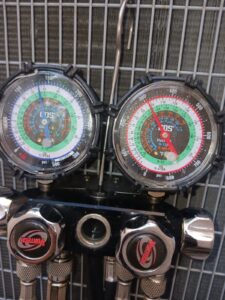
New sustainable homes use alternative heating and cooling options
Sustainable homes are progressively embracing HVAC innovations in their quest to utilize alternative heating and cooling options. These HVAC innovations are pivotal in reducing environmental impact, enhancing energy efficiency, and often leading to lower long-term costs. The focus on HVAC innovations in sustainable homes is not just a trend but a significant shift towards more responsible living.
Here, we delve into some of the key HVAC innovations that are being integrated into new sustainable homes as alternative heating and cooling options:
- Geothermal Heat Pumps: These systems use the earth’s stable underground temperature to heat and cool homes. A geothermal heat pump circulates a water-based solution through a buried loop system to take advantage of these constant temperatures. They are incredibly energy-efficient and have low operating costs over time.
- Solar Heating and Cooling: Solar energy can be used in several ways to heat and cool a home. Photovoltaic (PV) panels can generate electricity to power traditional HVAC systems or air-source heat pumps. Solar thermal systems can directly heat air or water for use in home heating. For cooling, solar energy can power absorption chillers or contribute to electricity needs for conventional air conditioning.
- Air Source Heat Pumps (ASHPs): These are becoming more popular due to their efficiency improvements. They work by extracting heat from the outside air (even in cold temperatures) to warm the home and can be reversed to cool the house in warmer months. Modern ASHPs are much more efficient than traditional electric heaters and can significantly reduce greenhouse gas emissions.
- Passive Solar Design: This isn’t a system but a design approach. Homes are designed to maximize sun exposure during the winter (for heating) and minimize it during the summer (for cooling). Features include strategically placed windows, thermal mass (like concrete floors that store and slowly release heat), and shade structures.
- Biomass Heating Systems: These systems use organic materials, such as wood pellets, chips, or logs, to provide heat. Modern biomass systems are highly efficient and can be a sustainable option if the biomass source is locally and responsibly sourced.
- Hydronic (Radiant) Heating Systems: These systems use heated water circulated through pipes in floors, walls, or ceilings to heat a home. They can be powered by various energy sources, including solar thermal panels, geothermal systems, or high-efficiency boilers.
- Natural Ventilation and Evaporative Cooling: In climates where it’s feasible, homes can be designed to take advantage of natural breezes and evaporative cooling principles, reducing or eliminating the need for air conditioning. This involves careful design of window placement, and ventilation pathways, and sometimes includes features like cooling towers or courtyards.
- Green Roofs and Living Walls: While not heating/cooling systems per se, green roofs (covered with vegetation) and living walls (vertical gardens) can significantly reduce a building’s heat gain, leading to lower cooling requirements.
- Energy Recovery Ventilators (ERVs) and Heat Recovery Ventilators (HRVs): These systems improve air quality and reduce energy needs by recycling energy from exhaust air to precondition incoming fresh air.
- High-Performance Insulation and Windows: Using advanced insulation materials and high-efficiency windows can drastically reduce the need for active heating and cooling, as they minimize the loss of heat in winter and the gain of heat in summer.
Sustainable homes often combine several of these technologies and strategies to maximize efficiency and comfort. The choice of systems depends on various factors, including climate, local environment, budget, and personal preferences.
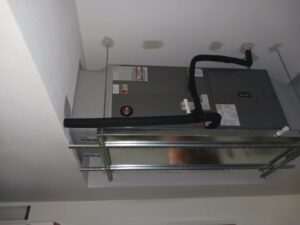
Noise Reduction Technologies
Noise reduction technologies in HVAC systems are crucial for enhancing comfort in residential and commercial buildings. These technologies are designed to minimize the sound emitted by heating, ventilation, and air conditioning units, thereby improving the overall environment. Here are some key noise reduction technologies and strategies used in HVAC systems:
- Sound Dampening Insulation: Specialized insulation materials can be used around ductwork and in HVAC compartments to absorb sound. Materials like fiberglass, foam, or rubber are effective in reducing noise transmission.
- Vibration Isolators: These are used to reduce the noise caused by the vibration of HVAC components. Rubber pads, springs, or other materials are placed under equipment like air handlers and compressors to dampen vibration and, consequently, reduce noise.
- Acoustic Barriers: Installing barriers or enclosures around noisy HVAC components can significantly reduce noise levels. These barriers are made from sound-absorbing materials and are designed to enclose or partially enclose the noise source.
- Duct Design Modifications: The design of the ductwork can impact noise levels. Using larger ducts can reduce air velocity and noise. Additionally, incorporating bends and flexible connectors in the ductwork can help in reducing noise transmission.
- Low-Noise Fans: Fans are a primary source of noise in HVAC systems. Using fans designed for low-noise operation can significantly reduce the overall sound level. These fans are engineered to minimize turbulence and vibration, which are common causes of noise.
- Silencers or Mufflers: Similar to automotive mufflers, HVAC systems can be fitted with silencers or mufflers in the ductwork to reduce noise. These devices are designed to absorb sound waves and are particularly effective in large commercial systems.
- Variable Speed Drives: Variable speed drives in HVAC systems can reduce noise by allowing the equipment to operate at lower speeds, which generates less sound. This not only reduces noise but also improves energy efficiency.
- Proper Maintenance: Regular maintenance of HVAC systems can prevent noise issues. Loose components, unbalanced fans, and other mechanical issues can contribute to increased noise levels and should be addressed promptly.
- Sound-Absorbing Materials in Construction: Using sound-absorbing materials in the construction of buildings, such as acoustic ceiling tiles and double-glazed windows, can also help in reducing the noise from HVAC systems.
- Remote Placement of Equipment: Where possible, placing noisy HVAC equipment like compressors and condensers in remote or less sensitive areas can reduce the impact of noise on building occupants.
Incorporating these noise reduction technologies and strategies in HVAC systems is essential for creating a more comfortable and quieter indoor environment. As technology advances, we can expect even more innovative solutions to manage and reduce noise in HVAC systems.
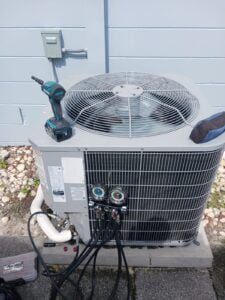
Embracing the Future: How The AC Therapist is Leading the Way in 2024’s HVAC Innovations
As we delve into the exciting realm of HVAC innovations for modern homes in 2024, it becomes increasingly evident that the industry is on the brink of a new era, marked by groundbreaking advancements and transformative technologies. The AC Therapist, a leader in the field, is at the vanguard of these HVAC innovations, ensuring homeowners are equipped with the latest and most efficient heating, ventilation, and air conditioning options available.
The array of HVAC innovations in 2024 is truly impressive, and The AC Therapist is committed to bringing these advancements into homes and businesses. From smart HVAC systems that boast unprecedented levels of efficiency and integration to environmentally conscious options like solar-powered and geothermal systems, these HVAC innovations are not just about comfort—they’re about crafting a sustainable, energy-efficient future.
The AC Therapist’s expertise in HVAC innovations extends to the intricate world of indoor air quality systems. With a growing emphasis on health and wellness, these systems represent a significant leap forward in ensuring the air we breathe is clean and safe. Furthermore, the advent of HVAC zoning technologies allows for personalized climate control in different areas of a home or office, a feature that The AC Therapist is adept at implementing.
In the realm of high-efficiency HVAC equipment, The AC Therapist is a trailblazer, offering solutions that significantly reduce energy consumption while maintaining peak performance. This focus on efficiency is not just beneficial for the environment but also the homeowner’s wallet, showcasing The AC Therapist’s commitment to providing value through HVAC innovations.
The integration of HVAC systems with the Internet of Things (IoT) and the proliferation of smart controls are other areas where The AC Therapist excels. These HVAC innovations offer homeowners unprecedented control over their environment, leading to enhanced comfort, convenience, and energy savings. The AC Therapist’s role in integrating these advanced systems into everyday life cannot be overstated, as they make these sophisticated technologies accessible and user-friendly.
Moreover, The AC Therapist’s dedication to staying abreast of the latest HVAC innovations means they are always ready to offer the most current and effective solutions to their clients. Whether it’s navigating the complexities of installing state-of-the-art equipment or providing routine maintenance on advanced systems, The AC Therapist’s expertise in HVAC innovations is a cornerstone of their service.
In summary, the top seven breakthrough HVAC innovations for 2024 present a future where comfort, efficiency, and sustainability go hand in hand. The AC Therapist, with its unwavering commitment to HVAC innovations, stands as a pivotal player in bringing these advanced solutions into homes and businesses. As we embrace these new technologies, the guidance and expertise of The AC Therapist in HVAC innovations will be invaluable in ensuring that homeowners and business owners alike can fully benefit from what the future of HVAC has to offer.

